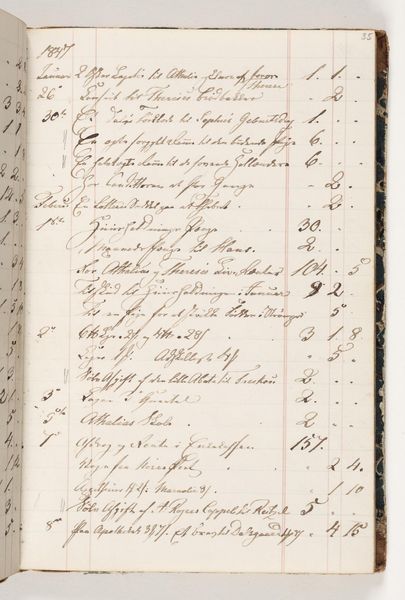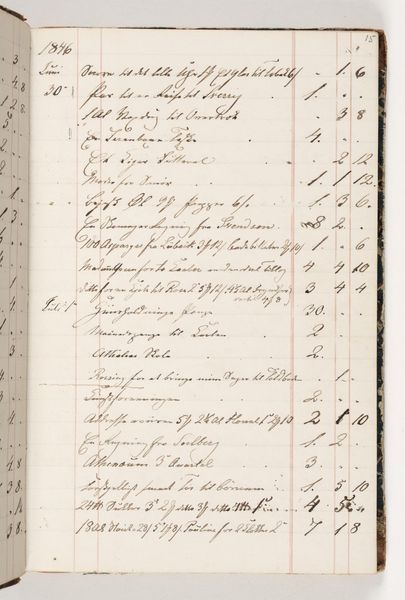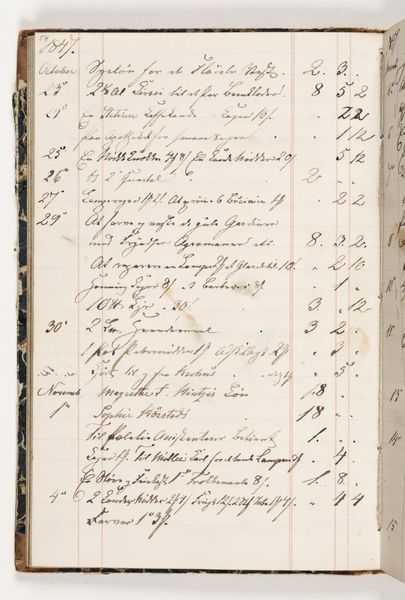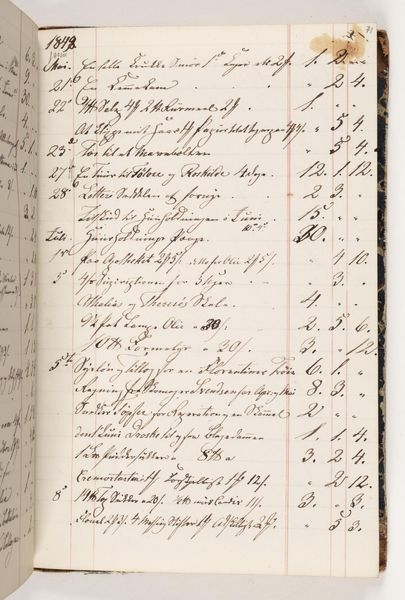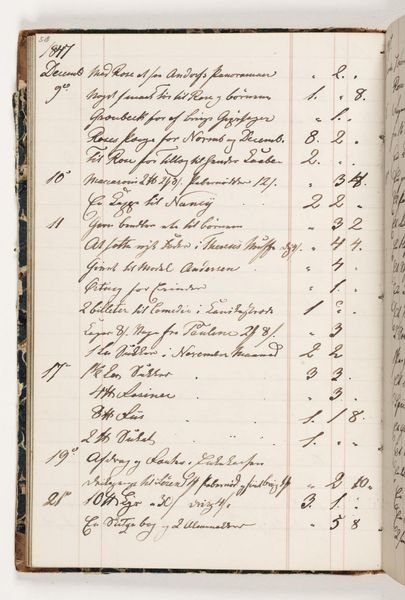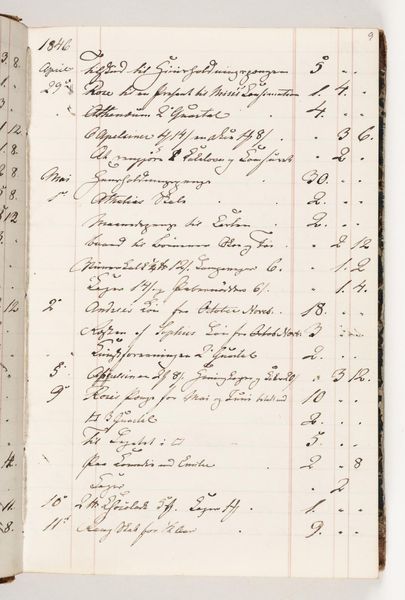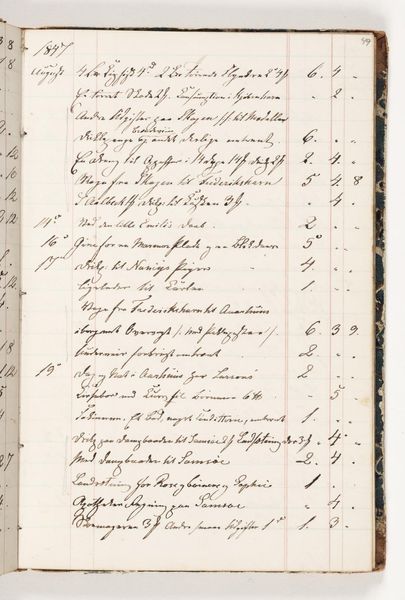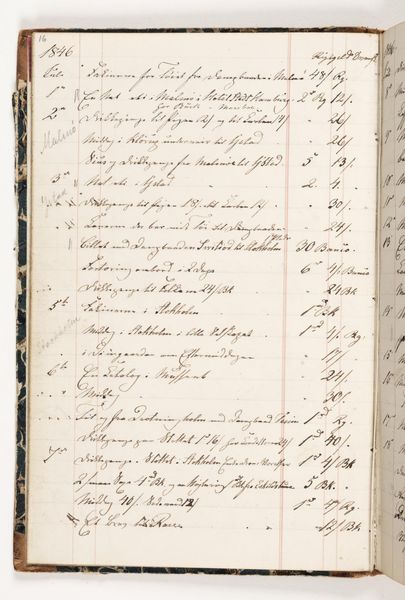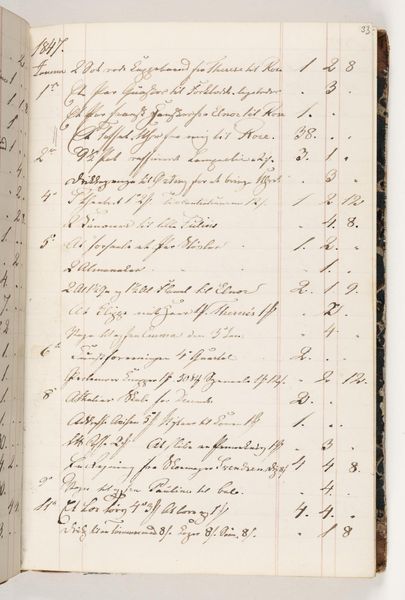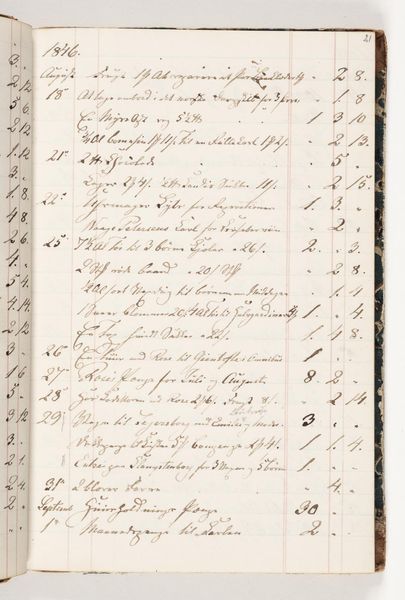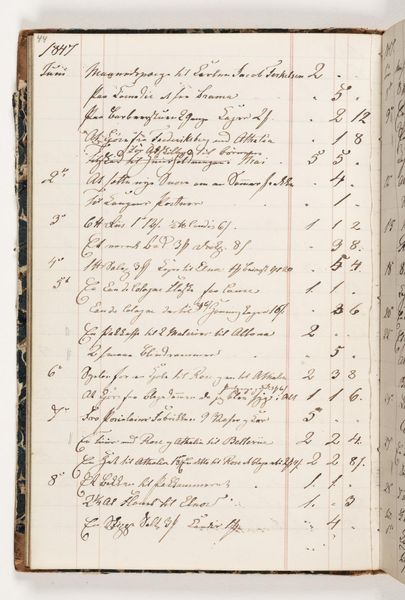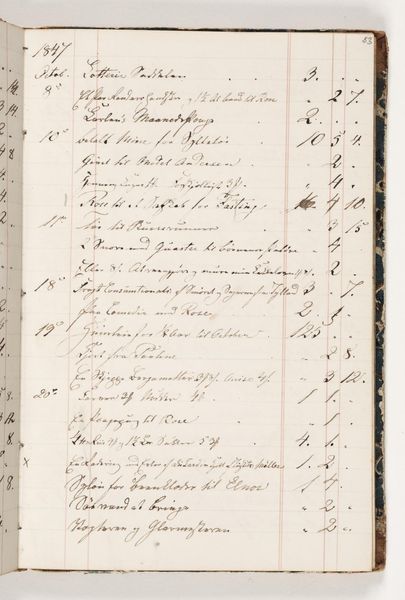
drawing, paper, ink
#
drawing
#
landscape
#
paper
#
ink
#
watercolor
Dimensions: 200 mm (height) x 130 mm (width) (bladmaal)
This is Martinus Rørbye's "Regnskab 1847," created in that year at a time when he was working as an accountant. It is made with ink on paper, humble materials that speak to the everyday nature of record-keeping. The handwritten script, penned with meticulous care, fills the page with columns of figures. It's not just a ledger; it's a physical record of transactions, each stroke of the pen representing a moment of exchange. Look closely, and you can almost feel the weight of each entry. The account book format speaks to the rise of capitalism and its reliance on meticulous documentation. Rørbye’s work, with its close attention to detail, is a product of its time – a society increasingly governed by the logic of numbers and the systems of accounting. The labor involved in creating such a document is evident in the neat rows of figures, a testament to the importance of precision and order in the economic life of the 19th century. Considering the materials, making, and context is key to understanding the art, challenging the distinction between fine art and craft.
Comments
No comments
Be the first to comment and join the conversation on the ultimate creative platform.
